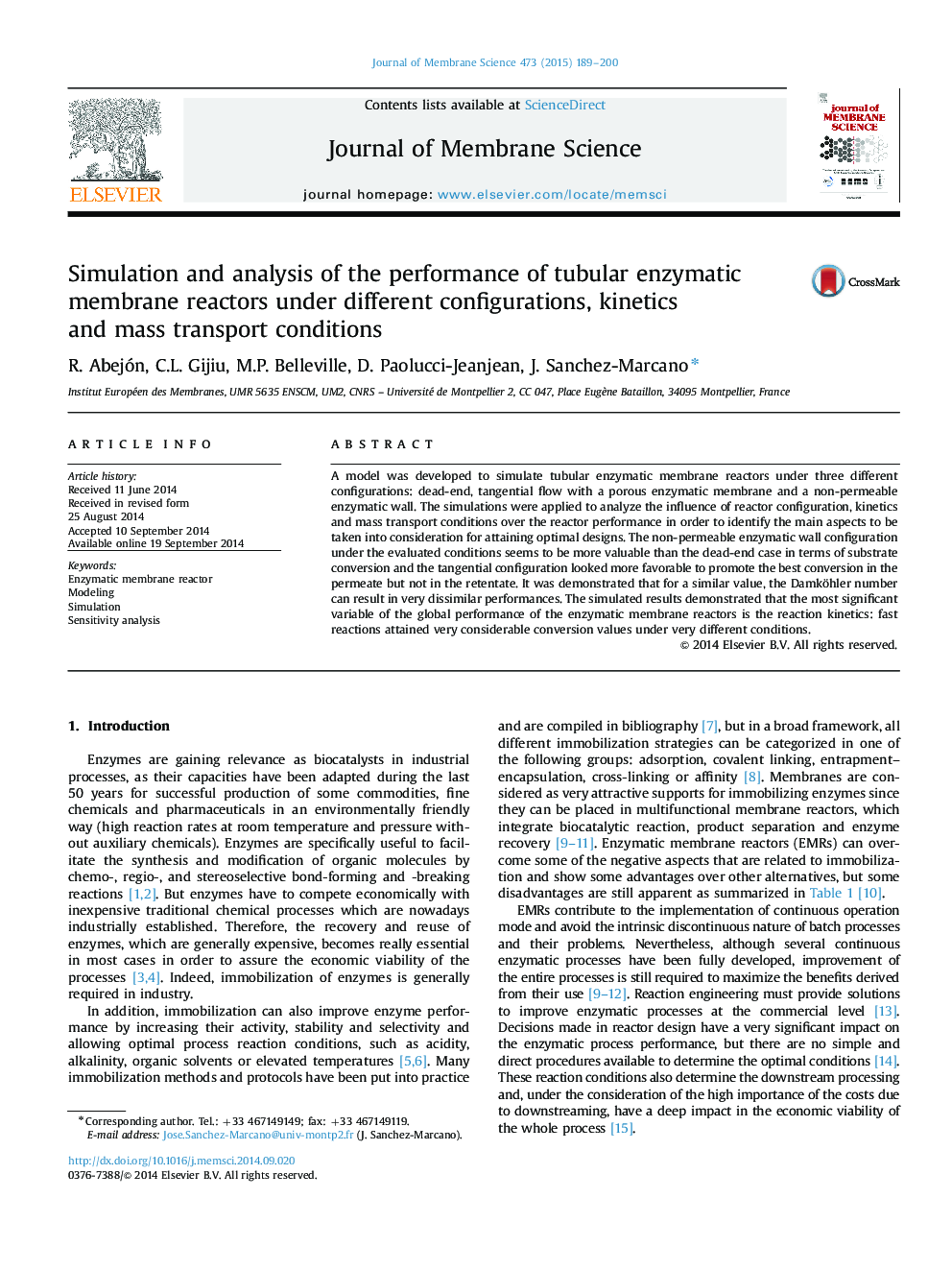| Article ID | Journal | Published Year | Pages | File Type |
|---|---|---|---|---|
| 633376 | Journal of Membrane Science | 2015 | 12 Pages |
Abstract
A model was developed to simulate tubular enzymatic membrane reactors under three different configurations: dead-end, tangential flow with a porous enzymatic membrane and a non-permeable enzymatic wall. The simulations were applied to analyze the influence of reactor configuration, kinetics and mass transport conditions over the reactor performance in order to identify the main aspects to be taken into consideration for attaining optimal designs. The non-permeable enzymatic wall configuration under the evaluated conditions seems to be more valuable than the dead-end case in terms of substrate conversion and the tangential configuration looked more favorable to promote the best conversion in the permeate but not in the retentate. It was demonstrated that for a similar value, the Damköhler number can result in very dissimilar performances. The simulated results demonstrated that the most significant variable of the global performance of the enzymatic membrane reactors is the reaction kinetics: fast reactions attained very considerable conversion values under very different conditions.
Related Topics
Physical Sciences and Engineering
Chemical Engineering
Filtration and Separation
Authors
R. Abejón, C.L. Gijiu, M.P. Belleville, D. Paolucci-Jeanjean, J. Sanchez-Marcano,
